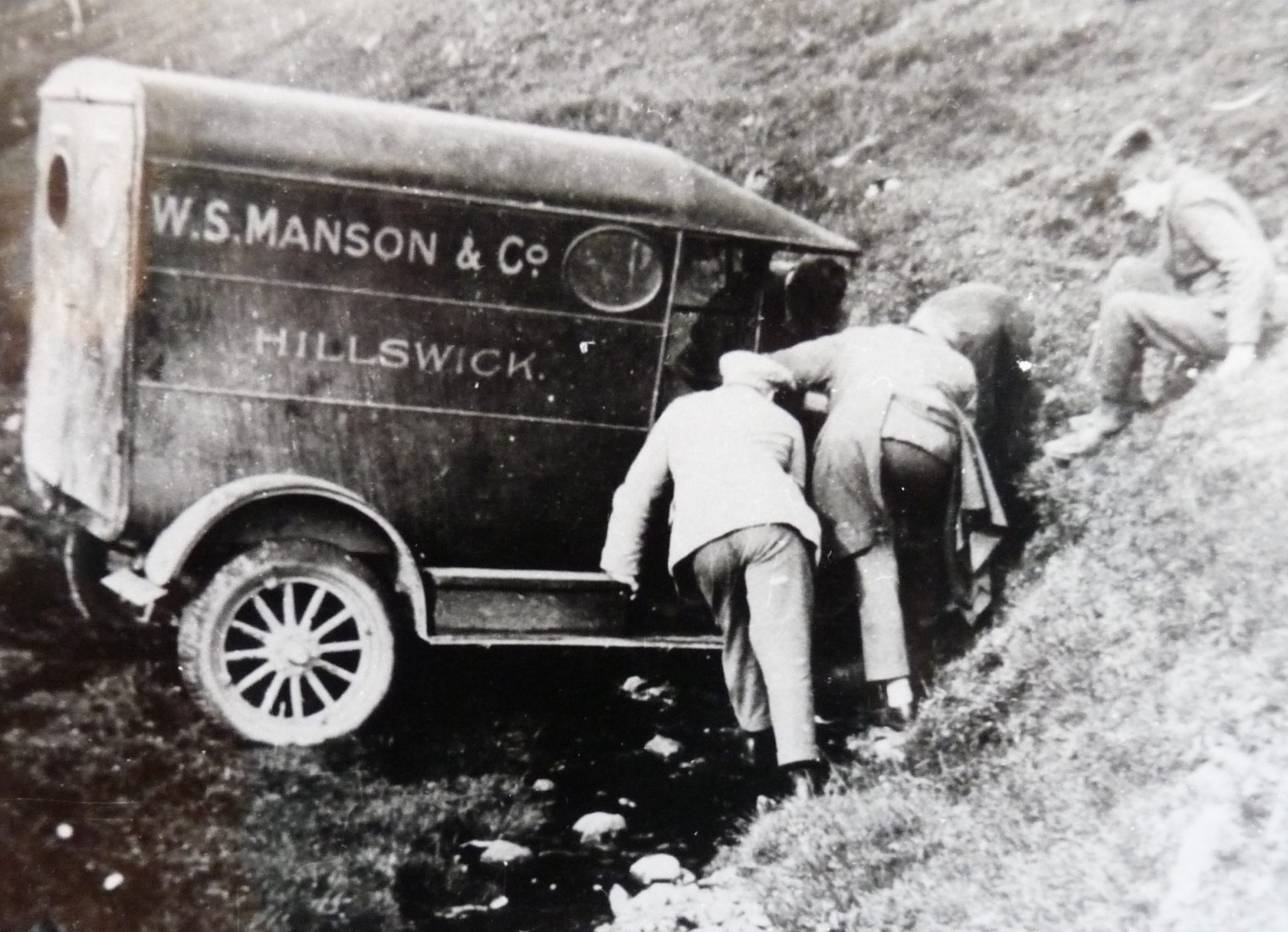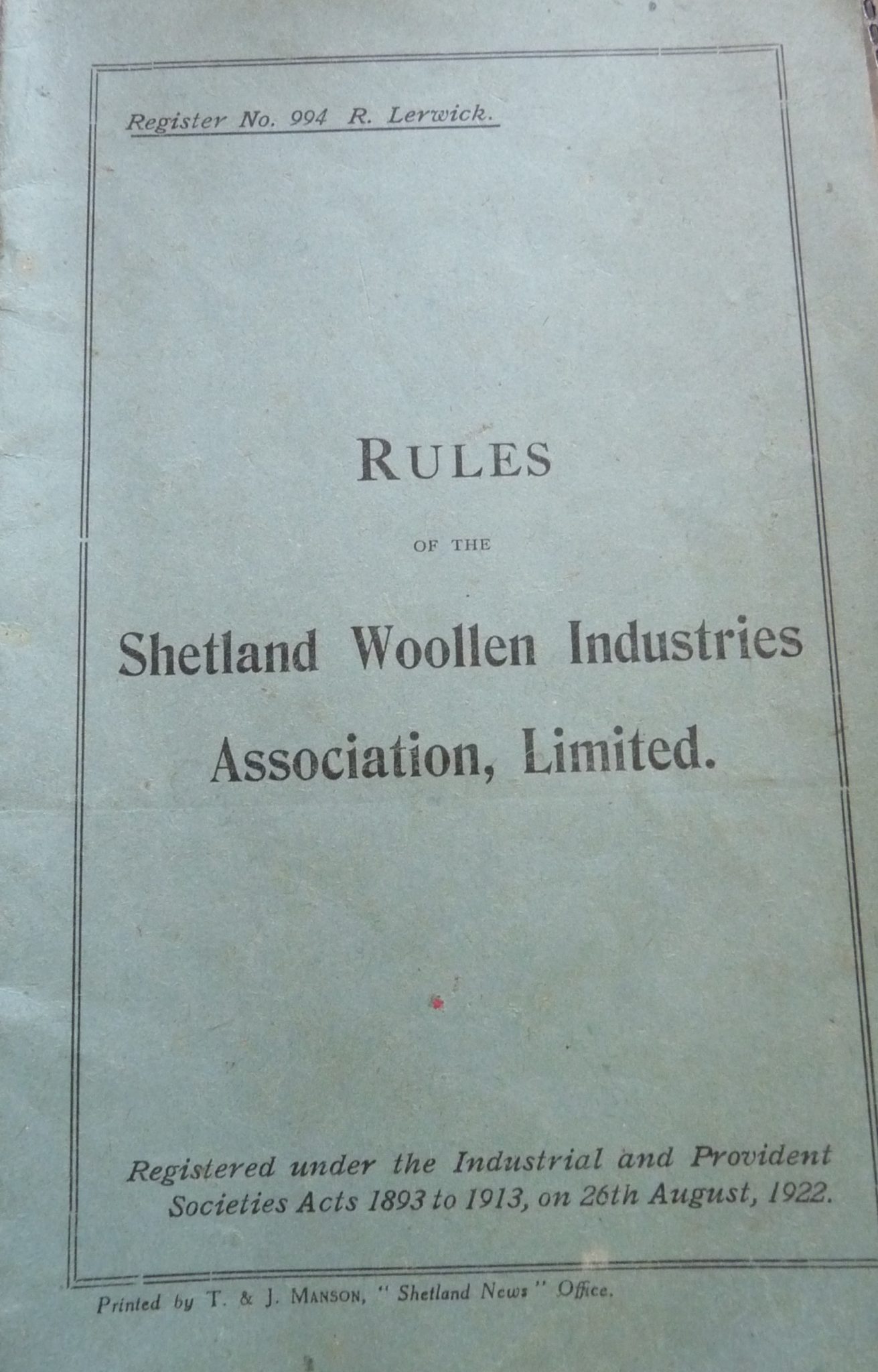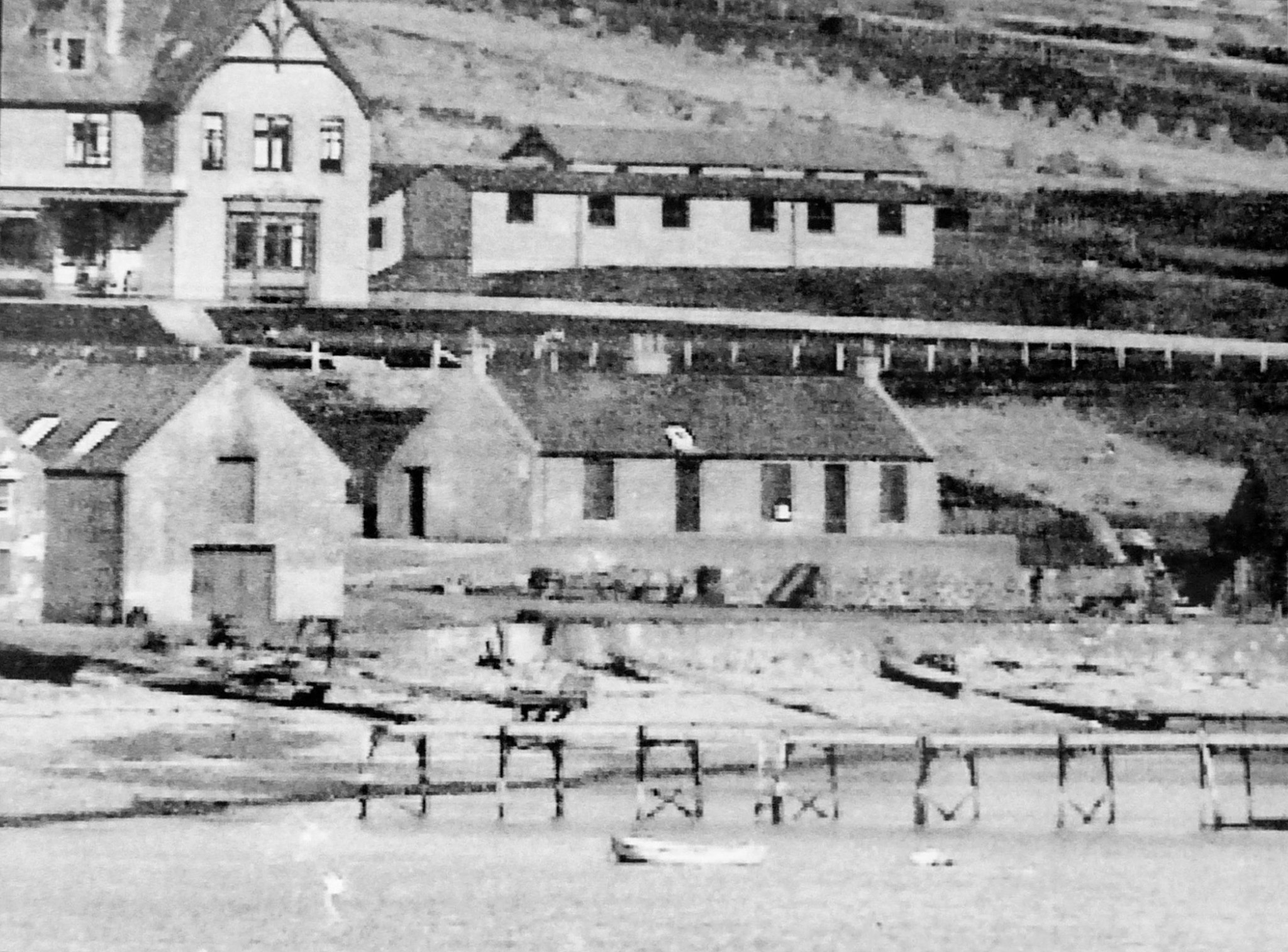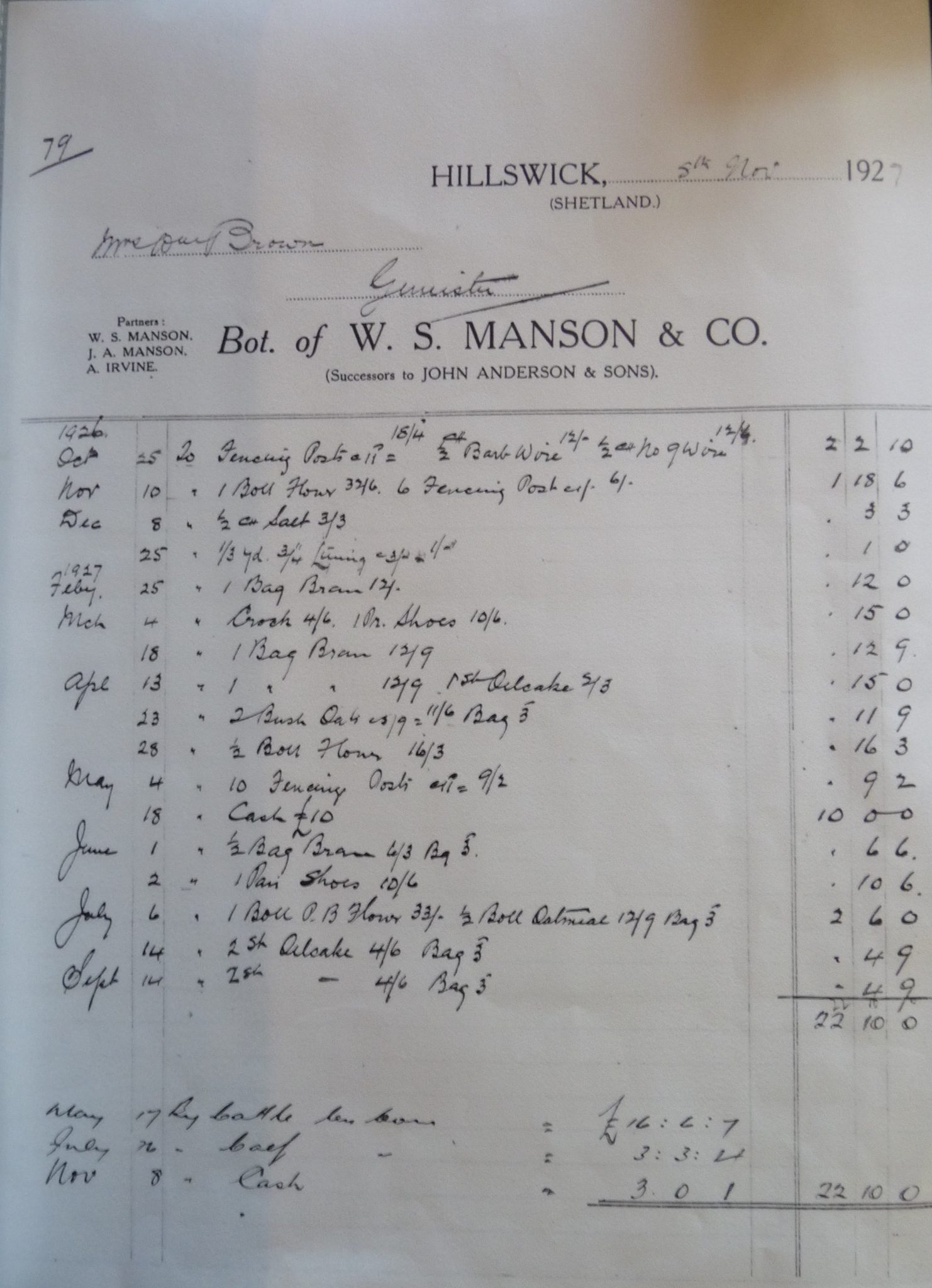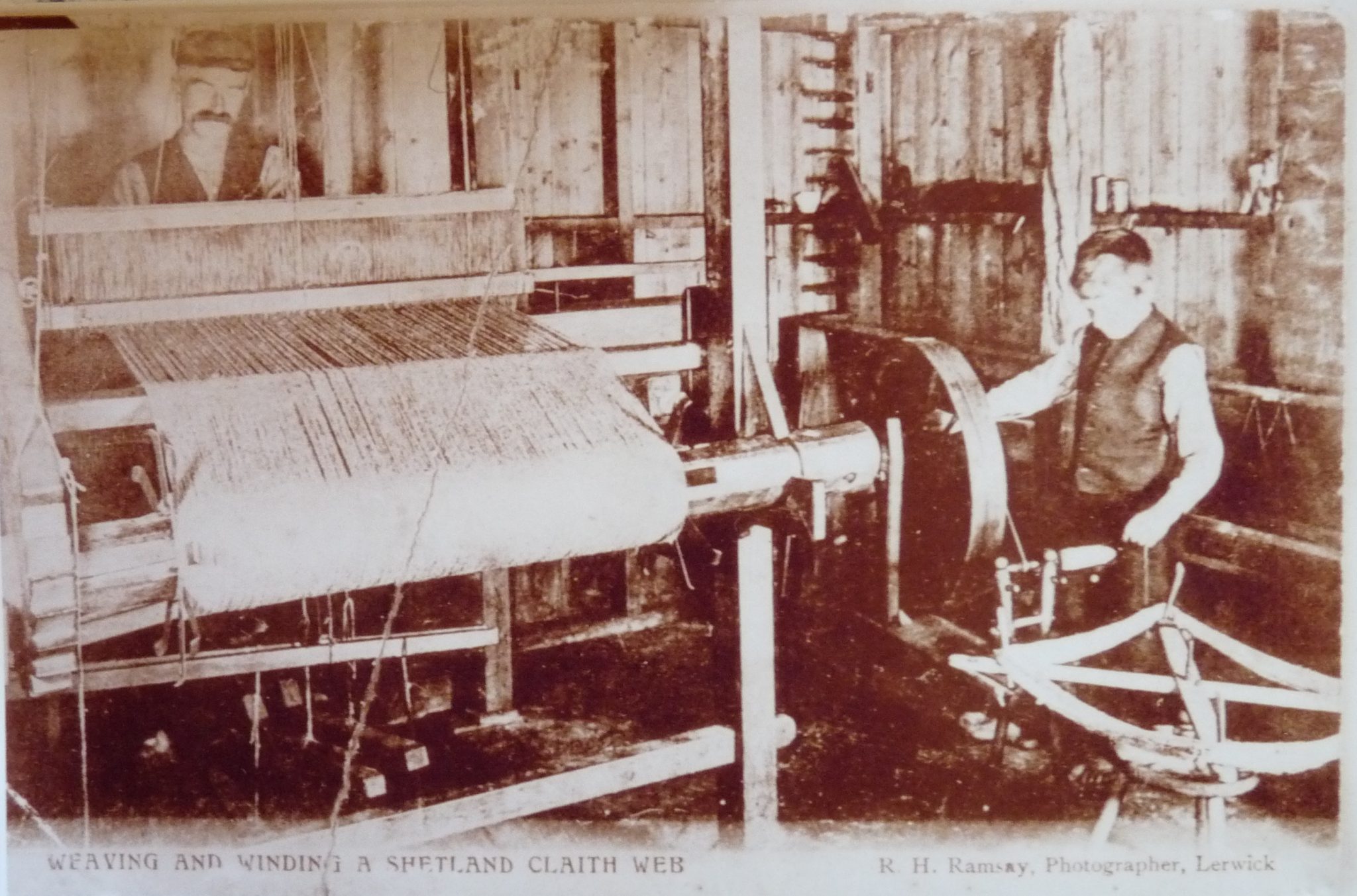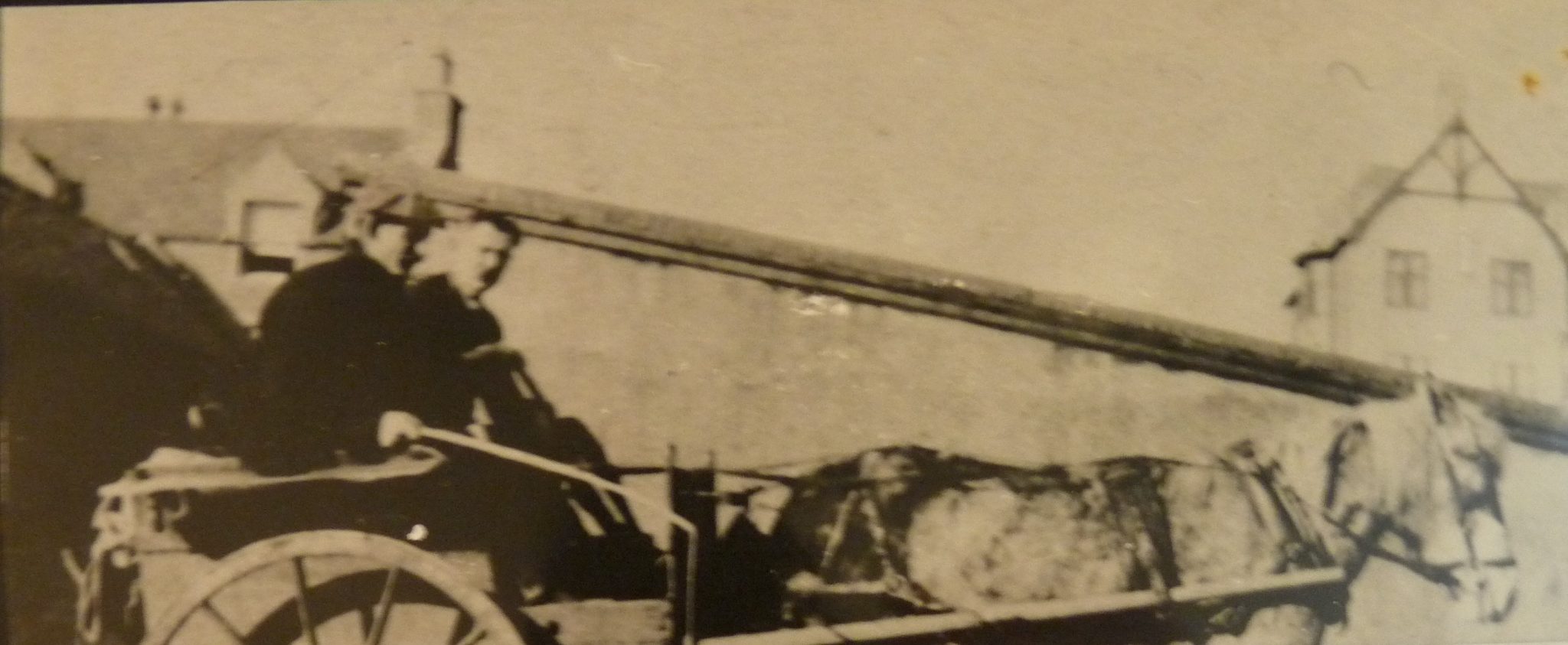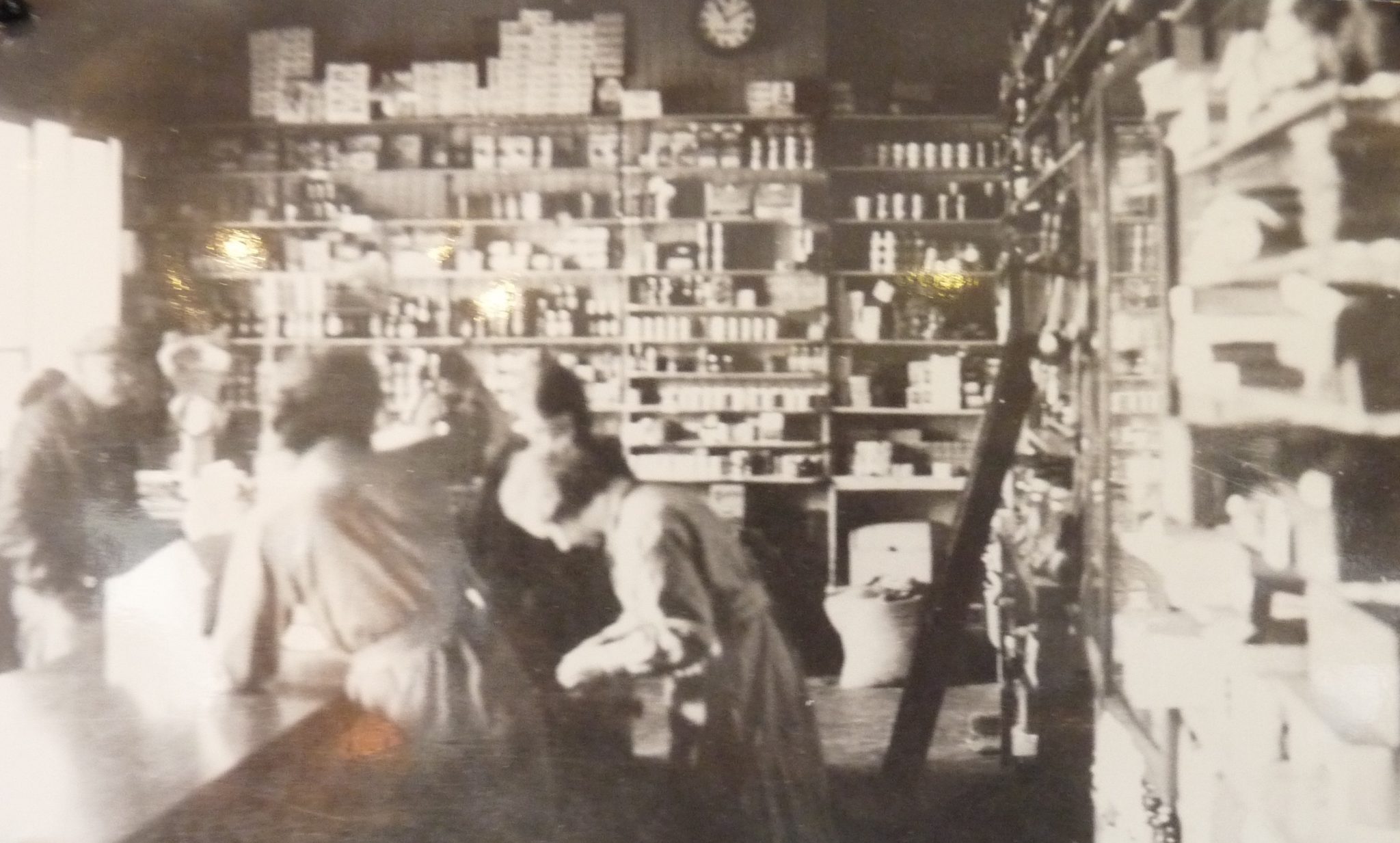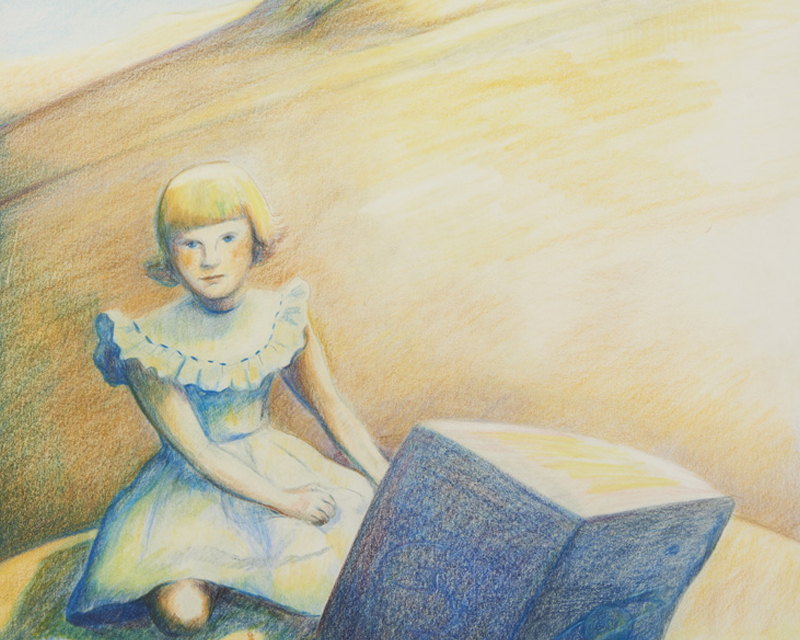FROM DA STORE TO THE WEAVING SHED
The Weaving Shed, known locally as ‘Da Store’ or ‘Da Muckle Store’, was always just that on its lower floor – a store for the shop and trading centre at Hillswick. It was in the 19th Century that, using mass concrete, the massive upper floor was constructed to enlarge storage space both for local crofters in Northmavine and the herring and ling fishery, which was crucial in Northmavine up until the first decade of the 20th Century.
But Hillswick had been important as a trading centre as long ago as the 15th Century, with its good anchorage and reasonable shelter for sailing ships, as well as a stony beach perfect for landing and curing salt fish. All the buildings on the front at Hillswick have their origin in the Hanseatic trading booth or bød set up by Hanseatic merchants, who in the 15th Century determined to take advantage of Shetland’s excellent herring fishery.
The ‘Haaf’ fishery used open boats called sixerns, manned by local crews, in the terribly dangerous business of catching fish at ‘Da Far Haaf’ up to 40 miles out at sea on craft which ranged from 24 to 36 feet in length, These boats were often owned, along with the fishing gear, by local landlords who leased them to their tenant crofters. As the Landlords often owned or factored out the local shops, fishermen and their families would barter their landings for goods. Fishermen would often run accounts that left them deeper in debt to the shop at season’s end than at the beginning. The same thing happened with knitwear, until the so called ‘truck’ system was finally eradicated by the Second World War.
The Haaf fishery eventually gave way to bigger, more efficient sailing vessels developed on the Scottish East Coast – the Skaffies, Fifies and Zulus. But herring and ling continued to be landed, dried and salted in Northmavine throughout the 19th Century.
There were herring stations at Hamar’s Voe, Hillswick, Hamnavoe and Heylor, where it was mostly girls and women who worked as gutters. When the boats landed their catch, the herring was put into troughs called ‘farlins’. The women were so skilled that a single cut was enough to gut the fish, the herring then being passed on to the packers, who lightly salted and layered the fish in barrels. After a day or two the herring were repacked, this was done at least once more, before being sealed for export.
By 1914, the herring stations – and most of the economic infrastructure which went with them, including several remote post offices – had gone. Much of the blame was laid on pollution from the whaling stations at places like Heylor and Urafirth, but overfishing and species migration was probably to blame, the Fifie and Zulu-class sailing boats were on their way out, steam drifters were in common use and they could go quickly to and from the fishing grounds and land fresher fish at the main markets in Lerwick and Scalloway.
By Tom Morton

Timeline
The shop and store at Hillswick developed from the early activity of the Hanseatic merchants from the 15th Century onwards.
The first official record in 1698 shows the Hamburg trader Adolph Westerman as having a building at Hillswick registered as a bød, or trading booth; it is likely he was operating long before that and at least from 1684
In 1698 Da bød and the Aest Ayre (the beach on the front at Hilswick, used for drying fish) was ’set in tack’ to the merchant John Otto Bassau by the Landlord Andrew Bruce of Muness.
From 1712 to 1836 The Giffords of Busta, major landlords, were in control of things at Hillswick, using various factors and merchants. That would include Patrick Gifford, between 1715 and 1762, and Gilbert gifford, from 1730 to 1732, as well as John Gifford.
The Booth and all adjacent buildings were finally factored by the wealthy James and Arthur Cheyne of Tangwick, under the management of James Clark of Tur Ness, Hillswick (on the Ness of Hillswick, a building now lost).
From 1836 to 1842 the Hillswick operation was run by the well-known Shetland company Hay and Ogilvie (as in Hay’s and Hay’s Dock in Lerwick), and managed by Robert Leask. From 1842 until 1847 Mr Leask ran it himself after Hay and Ogilvie went bankrupt. Then his lease expired.
In 1847 the Anderson family took over, expanding the business considerably under the name John Anderson, extending Da Store into Da Muckle Store, building the ‘new shop’ in 1890 and running things until 1922, when the proprietor, Thomas Anderson, emigrated to New Zealand with his family. The shop’s lease reverted to the Busta Estate.

In 1922 The company was taken over by WS and JA Manson and Arthur Irvine, being run as WS Manson and Co until Arthur Irvine died in 1975. It was during this period that the wool-broking, weaving and knitting business was fully established and the upper floor of Da Store really did become The Weaving Shed.
From 1976 until 1989 the shop, rebuilt in its present position, was run by John Muir. Da Store was used for general storage and dispensing fuel.
Joe and Fiona Cafferky took over in 1989 and ran the shop until 2007
In 2009 the shop and store, then closed, were bought by the Northmavine Community Development Company and became a community resource. The shop was restored, upgraded and reopened. Da Store, a listed building, was in need of major repairs and re-roofing and other uses for it were sought.
In 2015, regular visitor to Northmavine and frequent Hillswick resident Geoff Jukes saw the potential offered by the store, and bought it.
The Anderson years, 1847 – 1922
John and Gideon Anderson, originally from Brae, took over the trading centre of Hillswick (much more than just a shop or a pub) after Robert Leask’s lease expired. Gideon left the business in 1862, moving to Ollaberry to set up shop there.
John Anderson and Sons (son Thomas would leave for New Zealand in 1922) were “fish curers, general merchants, farmers, cattle and pony dealers and flockmasters”. According to a long article in The Shetland News written as Thomas Anderson prepared to leave Shetland, “the very nature of the business was that of a general store which dealt in everything.” Thomas Anderson told the paper, the firm “had to buy everything that was offered to them and sell everything that was wanted.”
It was the whaling, Thomas Anderson said, that was “driving him from Hillswick.” Fishing and the curing of herring had always formed the bulk of the business, he said.
“Whaling has killed our fishing, on which the prosperity of the West Side largely depended. Owing to the fishing being killed trade in general has suffered. We are back where we were 60 years ago.”
The paper, in what was very close to an advertising feature, waxed lyrical about the quality of the business premises at Hillswick.
“(They are…) extensive and thoroughly up to date. The shop and all the commodious stores have been built of stone and lime by the proprietors. The stores are without doubt the finest outside of Lerwick, and even bear comparison with the best and newest business stores in the town. The equipment of these stores inside and the conveniences for storing goods of all kinds and quantities are thoroughly modern, and would need to be seen to be appreciated as they deserve to be. The new shop premises were erected 30 years ago, and in addition to stores, etc, the dwelling houses of Laarsund and Findlins were built 27 years ago.”
The Shetland News also said:
“When recently a new concrete floor was being laid in the ‘bød’ (upon and around which the extensive business premises at Hillswick have grown) a brick floor was found 18 inches below the floor which was being renewed. The bricks, which had been laid facing the south east, were soft and crumbly, and became extremely friable when exposed to the air. That brick floor of the ‘bød’, as everybody still calls the place, was laid by the Dutchmen 300 years ago, when they first came to prosecute the fishing from Hillswick…”
Anna Irvine remembers
“My father had actually worked for the Andersons from the age of 14. And then he and his partners took over the business in 1922.
The weaving looms were in the seaward section of the top floor of Da Store, at the front – there were seven of them, installed by my father in 1946. There was a partition and the rear half of the shed’s top floor was used for storing bales of raw wool that had been bought in from the local crofters. There was a window at the back and the huge bales were brought in that way.
There were seven weavers, a man in charge and someone to look for faults and the like – I suppose nine people employed in total at the weaving, all local folk. They were weaving tweed, I suppose like Harris Tweed, and a lot of it went to Bond Street in London to made up into clothing. We also wove travelling rugs and scarves, and you can see some of them at the Tangwick Haa Museum.
The tweed was exported all over the world, and of course there was also the knitwear, a lot of which went to America.
Downstairs – and that was a completely separate building, really, with its own entrance – was used for general shop storage – everything was in there. We had rubber boots, rope, nails, dishes, cattle, hen and sheep feed – hardware; there was fencing wire and posts, netting, roofing – we stocked everything. The chutes at the side of the store were used to load animal feed in from lorries. No fuel was kept in there, like it was later – the paraffin was kept in what is now Jan’s shed, the one that’s used for the seal sanctuary.”

HISTORICAL PICTURES FROM SHETLAND
FINDING THE WEAVING SHED GALLERY
Hillswick,
Shetland
ZE2 9RW


